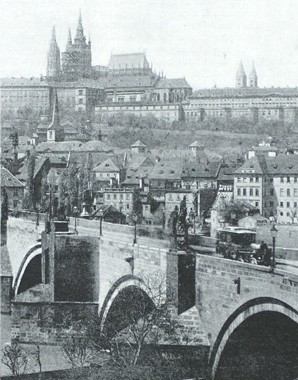Rudolf II: patron of the arts and collector
Emperor Rudolf is regarded as one of the most important patrons of the arts ever produced by the House of Habsburg. A man of omnifarious interests, he took an active part in the development of his collections. Art was a matter of real concern to him, not simply a means to project his princely magnificence. Rudolf made Prague, his imperial capital, a cultural centre of Mannerism.
It is in the medium of painting that Rudolf’s personal taste is revealed most clearly. The emperor gathered a circle of artists around him, the most famous of whom were Giuseppe Arcimboldo and Bartholomäus Spranger. Rudolf had a predilection for mythological scenes, and Spranger, his favourite artist in this genre, was adept at presenting erotic subjects in the guise of ancient myths.
Rudolf also started the wholesale acquisition of paintings by various masters such as Dürer, Brueghel, Titian and Correggio among others. The focus of his interest lay in Netherlandish and Italian works. However, his ambitions as a collector also extended to prints and engravings, sculpture and craft objects. In the latter genre it is above all the works of the jewellers and gem-cutters employed by Rudolf that today constitute some of the major attractions of the collections displayed in Vienna’s Kunsthistorisches Museum.
Rudolf’s approach to art was typical of his times. In the Kunstkammer (chambers of art and curiosities) the objects were not displayed according to art-historical or educational criteria as they would be in a modern-day museum. The aim was to reflect the richness and diversity of the universe in microcosm. Products of the craftsman’s skill were displayed alongside wonders of Nature, with exotic animal specimens and fossils arranged next to automata and measuring instruments. The accumulation of rarities was intended to demonstrate the exquisite taste of the aristocratic connoisseur. Contemporary doctrines and ideas about the structure of nature that hovered on the border between science and superstition were reflected in the collections: accordingly jewels and gemstones for example possessed not only economic and aesthetic value but were also images of cosmic powers that were embodied within them.
Rudolf also promoted the scholarly arts and sciences, summoning historians and antiquarians, mathematicians and astronomers, experts in the occult and theologists, physicians and alchemists to his court. Working in Prague at the emperor’s behest were pioneers of modern science such as Tycho de Brahe and Johannes Kepler alongside charlatans and adventurers searching for the ‘philosophers’ stone’.
Today only remnants of the collections can be found in Prague. The larger part ended up in Vienna and was later assimilated into the holdings of the Kunsthistorisches Museum, while much was plundered during the turmoil of the Thirty Years’ War. Yet even today, Prague still retains its image as the ‘city of magic’ thanks to the presence of Rudolf’s Court of the Muses in the years around 1600.















